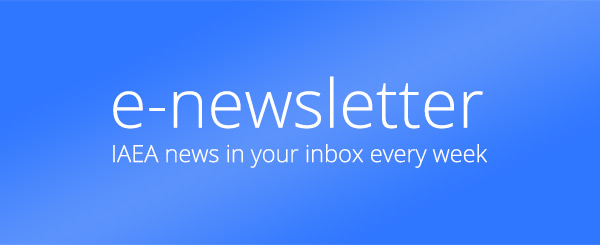The IAEA is launching a new research project to integrate isotope tracers into hydrological and climate modelling systems for more robust simulations of water availability.
New IAEA Project to Enhance Water Forecasting
Reduced baseflow during drought conditions led to the Verlorenvlei wetlands in South Africa drying out. Isotope-enabled water balance modelling helped to understand changes in the system leading to the reduction of surface water in the wetlands. (Photo: A. Welham/IAEA)
Why This Matters
Forecasting climate and hydrological extremes is one of the most important means of adapting to climate variability and potentially limiting the risks associated with those extreme events. All regions across the globe have a climate type that features characteristic changes in rainfall across the seasons, average precipitation amount, snowfall period, average temperatures and daily temperature ranges.
However, under enhanced atmospheric carbon dioxide concentrations, the predictability of changes in weather conditions and hydrological extremes is more uncertain, leading to changes in groundwater availability and recharge. As a result, over the past two decades, scientists have revealed that current models need stronger evaluation and more robust simulations to better track extreme long-term changes in water systems.
Isotope-Enabled Models: Strengths and Gaps
Unlike conventional hydrological models, isotope-enabled models can simulate and track how different forms of water move and change throughout the water cycle. As a result, isotope-enabled hydrological models are more robust than conventional models as they use precipitation data to simulate both surface and baseflows as well as stream or groundwater isotopes. But isotope-enabled models suffer from a lack of available data. The models typically require several years of continuous data for precipitation, as the primary water input source, but despite ongoing precipitation collection efforts, records are not always continuous.
New developments in isotope-enabled climate models have shown potential for improved weather forecasts and the simulation of precipitation isotope inputs for hydrological modelling. But some elements of the data outputs are not as robust as they could be, and the higher data requirements of isotope-enabled models mean they have not yet been used in forecasting systems. By combining freely available existing weather forecasts and climate predictions with isotope-enabled hydrological and climate models could provide a means of further reducing forecasting uncertainty. This will help member countries generate more robust models and adaptation strategies to address the impact of extreme weather events like floods and droughts.
Coordinated Research Project Focus Areas
The Coordinated Research Project (CRP) will address:
- Data gaps: Patching incomplete datasets, aligning time-stamped data (hourly/daily/monthly).
- AI/ML solutions: Generating simulated data where observations are lacking.
- Model coupling: Testing flexible integration of isotope-enabled hydrological and climate models.
The goal of the CRP is to boost uptake of isotope-enabled models for risk assessment and water management, supported by improved observational data collection. Case studies will demonstrate their novel applications in weather/climate forecasting.
How to join this CRP
Please submit your Proposal for Research Contract or Agreement by email, no later than 10 June 2025 to the IAEA’s Research Contracts Administration Section, using CRP ID ‘F31008’ and the appropriate template on the Coordinated Research Activities web portal.
For further information, please visit the CRP page. The IAEA encourages institutes to involve, to the extent possible, women researchers and young researchers in their proposals.






